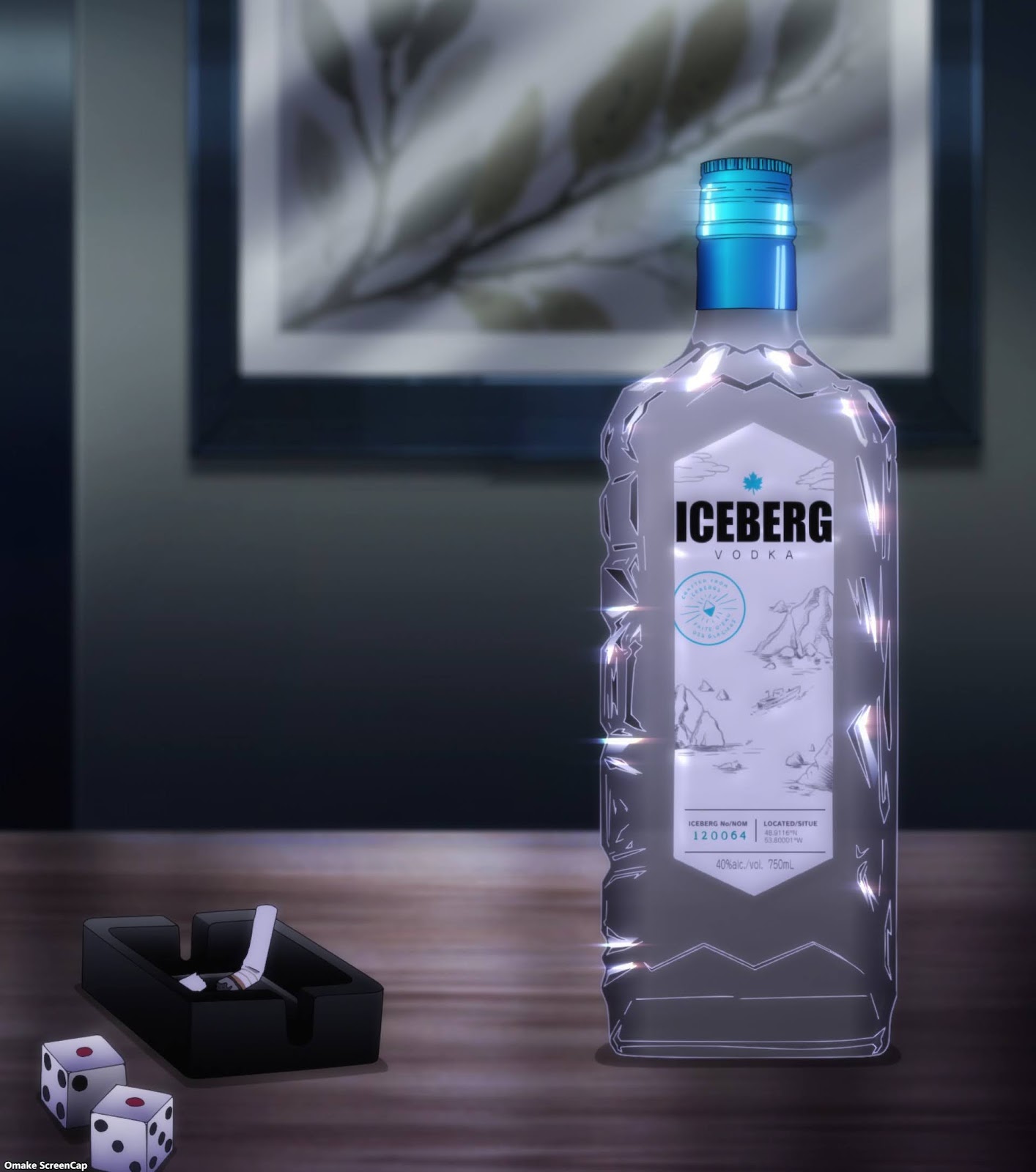Episode 9 — “North Wind”
Hmm.
Soothe the soul or kick soldiers back into the fight?
Bartender Glass of God shows us how a difference in location and
clientele changes a bartender’s job. In the expensive haunts we’ve seen
Sasakura in so far, he has the luxury of acting as a therapist, priest, or
supportive friend. Then we have Kitakata, Sasakura’s old colleague. He runs a
dive bar whose patrons need stiffer medicine than the ones that soothe souls.
If Sasakura runs a hospital for wounded souls, Kitakata manages a field triage
medical tent.
His customers’ psyches fight for survival to meet the next day, making him a
combat medic. But like any other medicine, alcohol can be a poison because
it’s the dosage and intention that matters. So sometimes, his regulars need
self-defense instead of first aid. That’s when Kitakata turns medicine into
poison. For example, to protect a hostess from a pushy guest, the dive bar
bartender intoxicated the man with 176 Proof vodka. Instant drunken stupor.
Soothing the soul means different things in different circumstances. Kitakata
soothed the hostess’s soul by serving someone else, which ruffled Sasakura’s
sensibilities.
Kitakata’s dive bar, the North Wind (a play on words with his name and his mentor’s bar, Bar Kaze — 北, kita, north, and 風, kaze, wind), reminded the audience how a bar’s bartender is the secret ingredient for its general impression. The bar atmosphere suits the clientele, but its bartender can welcome any client. Did you notice the separate experiences between Miwa entering a dive bar and Kitakata’s hostess friend walking into an upscale counter bar in Ginza? Both initially felt out of place, but Sasakura welcomed an uncomfortable newcomer. What was Kitakata’s reaction? Dismissal. And the bartender at Edenhall, which doesn’t serve beer or shochu (a distilled Japanese spirit using koji mold instead of yeast for fermentation), concocted a mixed drink to suit his customer’s taste. Kitakata complimented Sasakura’s customer service, in addition to his mixology prowess.
Heh.
The official industry name of Jim Beam in America is Suntory Jim Beam.
Yes, the Suntory Group owns the Kentucky whiskey conglomerate that owns
several other distillery labels. Suntory also owns Maker’s Mark, which
most spirit connoisseurs consider affordable, quality whisky. But Jim Beam
white label? Cheap. Gets you there. Not terrible. It’s the “well drink”
label of dive bar bourbons, almost everywhere. Even Japan, apparently! I
couldn’t help but laugh when the first image of Kitakata’s North Wind bar
was a barfly passed out with a bottle of Jim Beam white label next to
him.
The most surprising thing about Kitakata’s versions of a
Bloody Mary and a Bloody Caesar
was the total absence of their garnishing decorations. Search on Instagram
for any picture of a
Bloody Mary, and what is the first thing you see? Not the bloody cocktail! The red
tomato juice, Tabasco sauce, horseradish, and Worcestershire sauce mix
usually hides under a salad of celery, skewered olives, pickles, hamburger
sliders, bacon, asparagus, parsley, cucumber, lime, or anything else the
head bartender thinks is trendy enough for wine o’clock during the Sunday
Brunch hour. Gobsmacked. That’s me.
Funnily enough, if you ask a Canadian what they call a vodka drink mixed
with Clamato juice, they don’t call it a “Bloody Caesar.” It’s just a Caesar. Does the clam juice added to tomato juice relate
to Caesar dressing? No, because the fishy saltiness in the salad dressing
comes from ground anchovies. The Caesar’s country of origin has no idea
why its favorite spicy cocktail references Roman emperors. As for
Mary I, the daughter of Henry VIII, who violently restored Catholicism as the
state religion of England for a short time? Sure. Bloody Mary makes
sense.
Bartender Glass of God returned to its roots briefly when Sasakura mixed
two Caipirinhas to taste differently. Muddling lime differently, combining
different sugars, and using different ice produced distinct flavor
profiles. Supposedly, Kitakata received a
Caipirinha in its original form, while Sasakura gave his hostess friend a sweeter, earthier version. But
why did the Brazilian cocktail featuring lime rind, brown sugar, and
cachaça (the Brazilian spirit distilled from fermented sugar cane juice)
match an expectation of shochu and lemon-lime soda? Blame chuhai. What’s
that?
Anyone who has watched anime very long has seen adults buying chuhai cans
at the local konbini (convenience store) or even from a vending
machine.
Chuhai
is a portmanteau of shochu and highball, a cocktail of
shochu spirits
and soda in a highball glass with ice. Remember — a highball is any
cocktail with liquor, soda, and ice inside a tall glass. Chuhai is the
Japanese equivalent of hard lemonade or hard seltzer. Besides a bartender,
you can get them from vending machines! Also, the Japanese usually drink
shochu with carbonated water and other fruit flavors instead of straight,
like sake. In
Snack Basue
last season, the snack bar almost exclusively sold shochu bottles to its
regulars but always mixed them with soda water and ice in a highball
glass.
When Kitakata’s hostess friend asked for shochu, Sasakura knew what she
meant. The bartender only had to devise a chuhai substitute from the
spirits and ingredients behind the bar. Japan’s national cocktail deserves
another nation’s favored drink. How about Brazil?
From an overall narrative perspective, we have broad strokes of Sasakura’s
backstory and a possible traumatic reason for his return to Japan from France.
Kitakata heard how Sasakura blamed himself for a customer’s death. And perhaps
an explanation for his fear of heights.
Here’s speculation — Sasakura tried to heal a distraught customer who leaped off a tall building. Is this why he’s even more desperate to perfect the Glass of God? And do others know Sasakura needs psychological healing for himself? Perhaps. The elder Kurushima obviously conspires with the owner of Edenhall. But the more curious mystery: Who is “Maki-kun,” the owner of Edenhall?







































No comments:
Post a Comment
Please don't comment on posts more than 4 years old. They will be deleted.